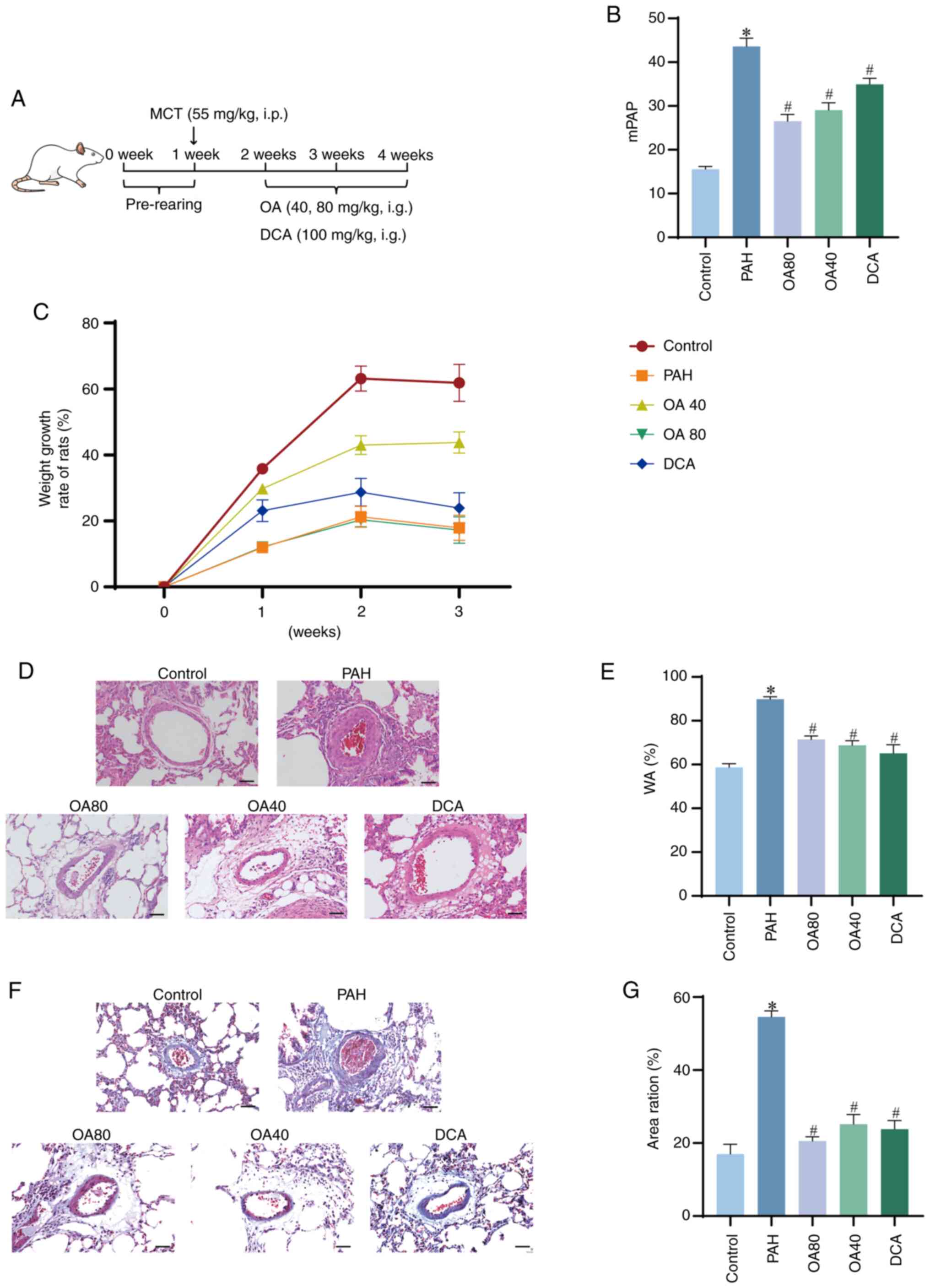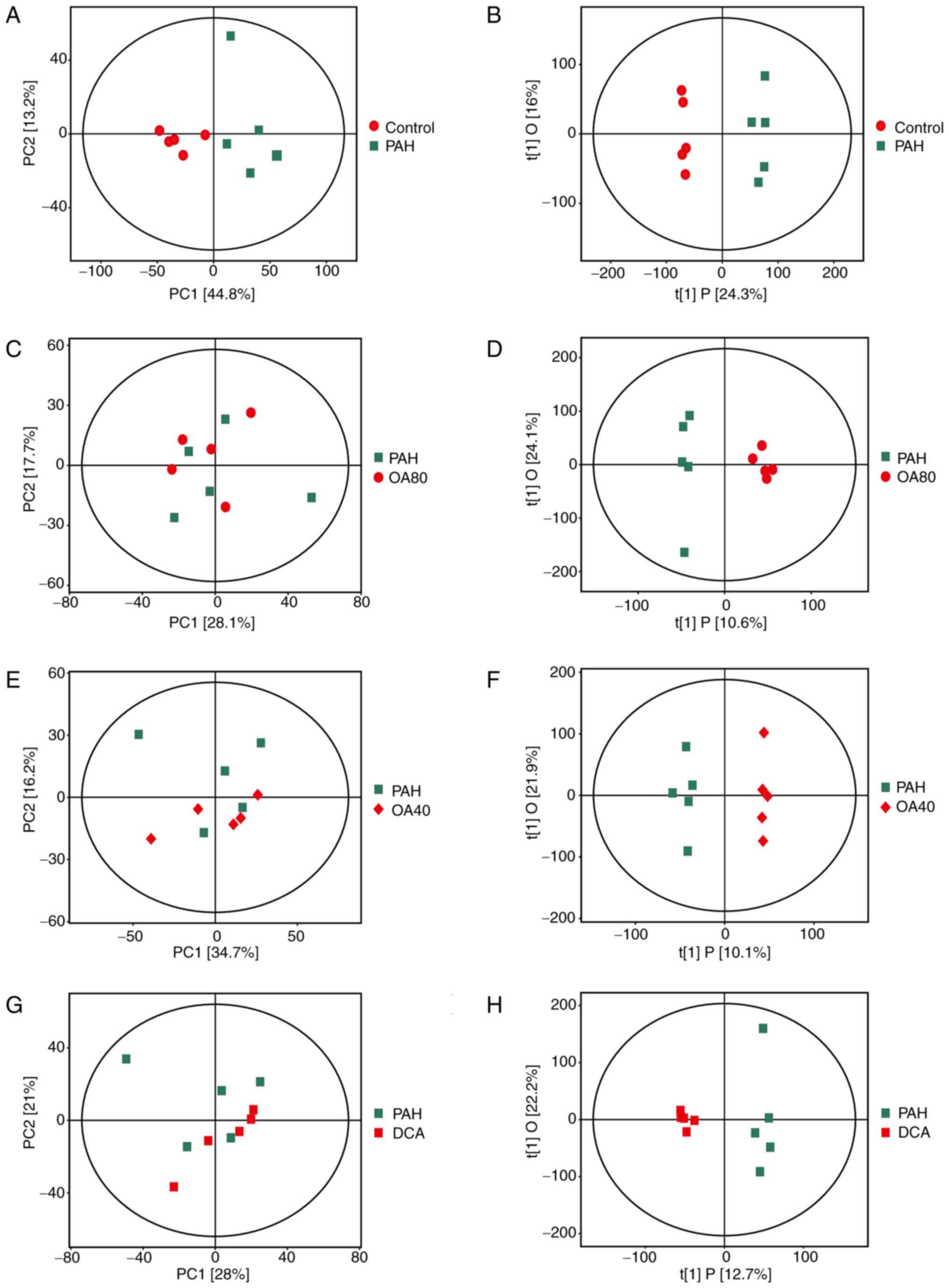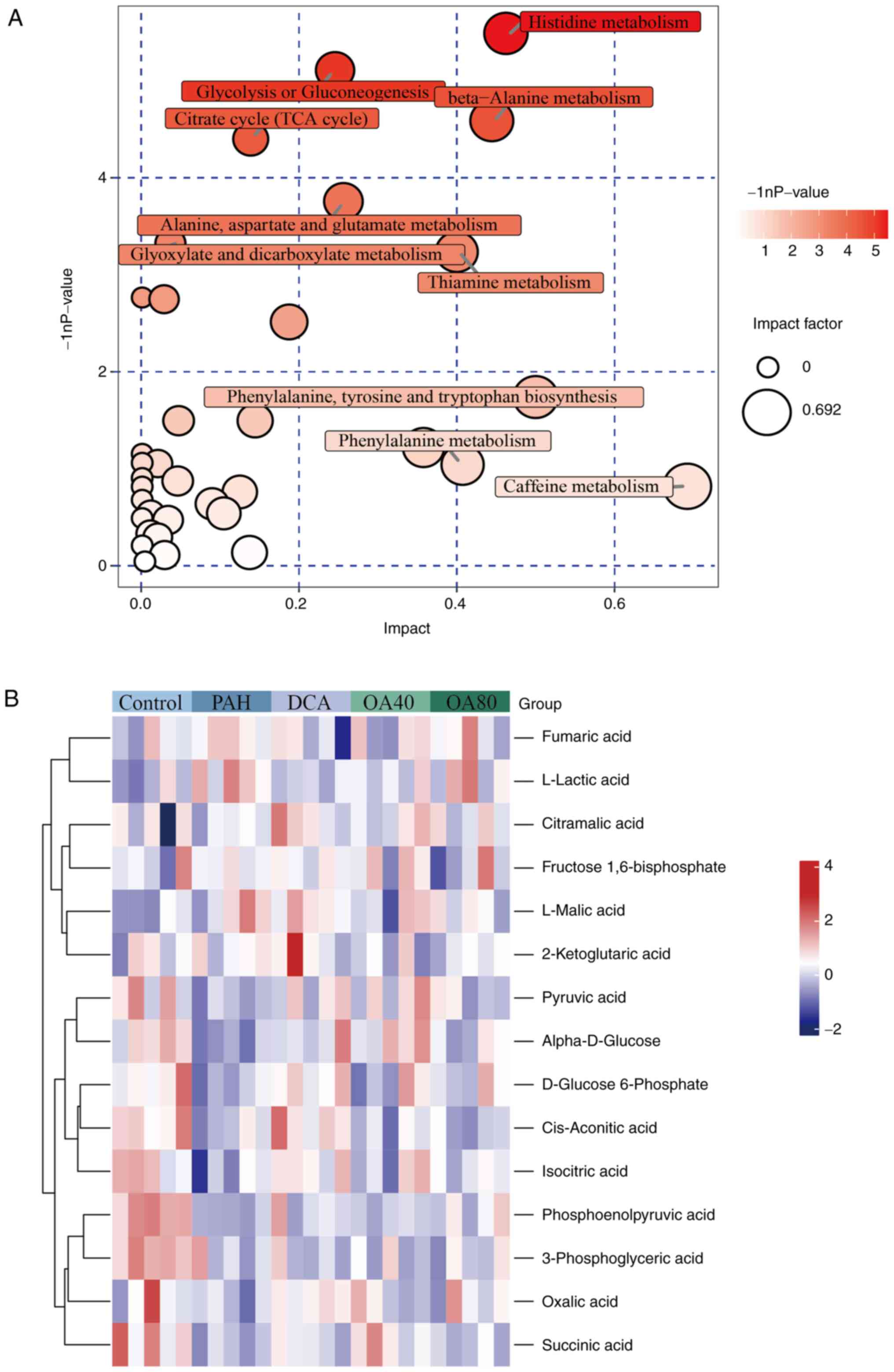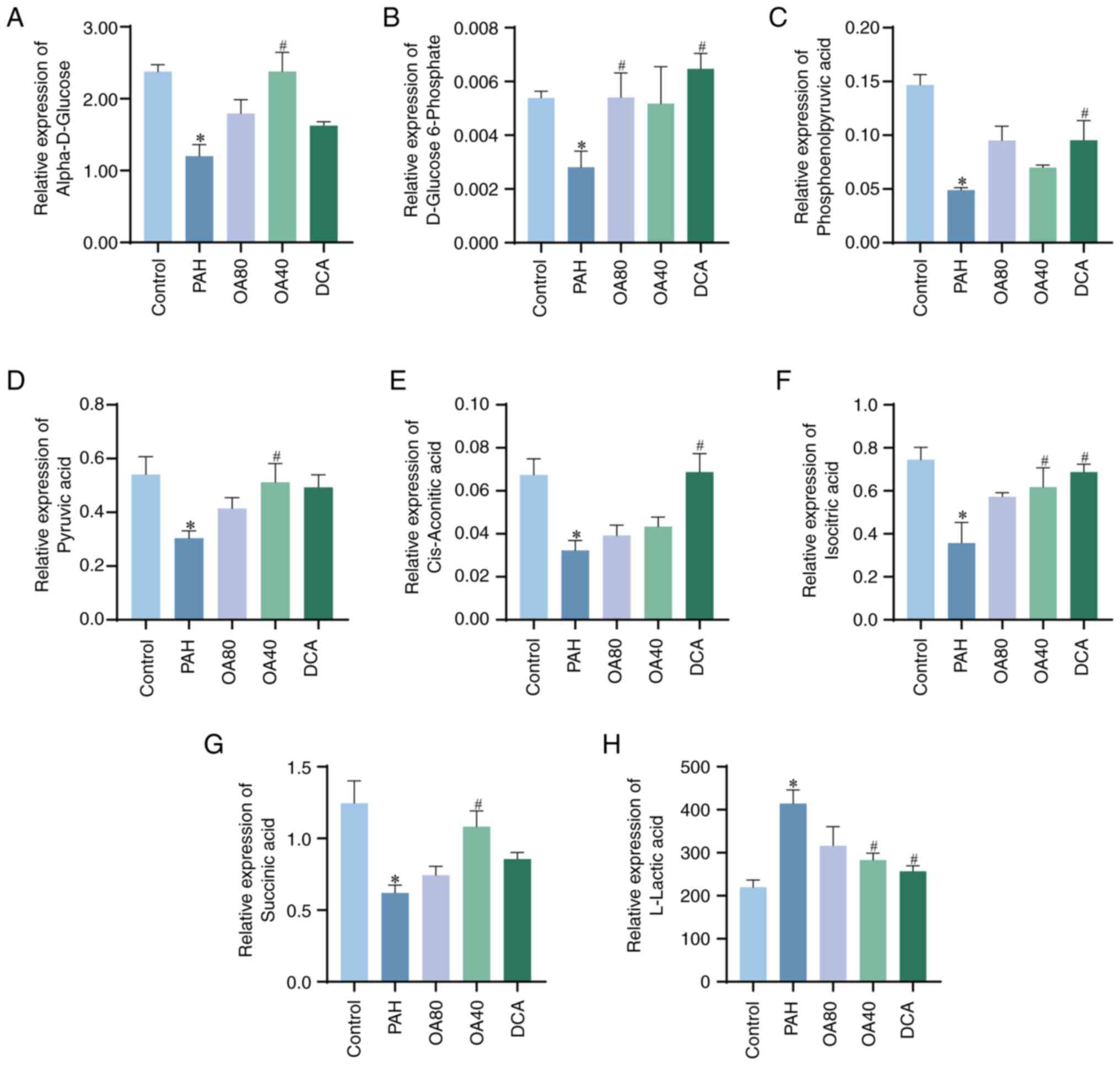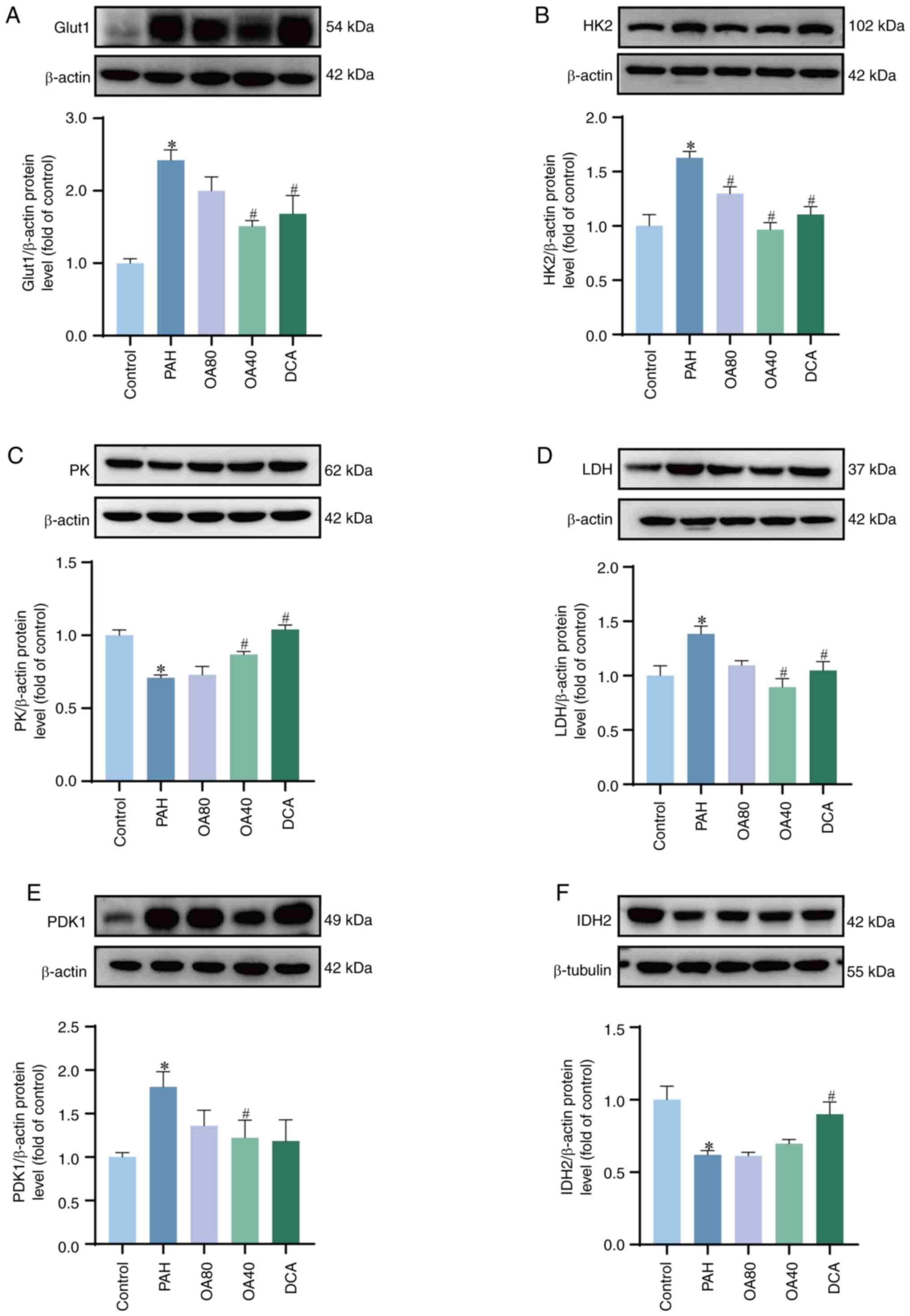|
1
|
Humbert M, Kovacs G, Hoeper MM,
Badagliacca R, Berger RMF, Brida M, Carlsen J, Coats AJS,
Escribano-Subias P, Ferrari P, et al: 2022 ESC/ERS Guidelines for
the diagnosis and treatment of pulmonary hypertension. Eur Heart J.
43:3618–3731. 2022. View Article : Google Scholar : PubMed/NCBI
|
|
2
|
Culley MK and Chan SY: Mitochondrial
metabolism in pulmonary hypertension: Beyond mountains there are
mountains. J Clin Invest. 128:3704–3715. 2018. View Article : Google Scholar : PubMed/NCBI
|
|
3
|
Sakao S and Tatsumi K: Vascular remodeling
in pulmonary arterial hypertension: Multiple cancer-like pathways
and possible treatment modalities. Int J Cardiol. 147:4–12. 2011.
View Article : Google Scholar : PubMed/NCBI
|
|
4
|
Spiekerkoetter E, Goncharova EA,
Guignabert C, Stenmark K, Kwapiszewska G, Rabinovitch M, Voelkel N,
Bogaard HJ, Graham B, Pullamsetti SS and Kuebler WM: Hot topics in
the mechanisms of pulmonary arterial hypertension disease:
Cancer-like pathobiology, the role of the adventitia, systemic
involvement and right ventricular failure. Pulm Circ.
9:20458940198897752019. View Article : Google Scholar : PubMed/NCBI
|
|
5
|
Han S and Chandel NS: Lessons from cancer
metabolism for pulmonary arterial hypertension and fibrosis. Am J
Respir Cell Mol Biol. 65:134–145. 2021. View Article : Google Scholar : PubMed/NCBI
|
|
6
|
Liu X, Zhang L and Zhang W: Metabolic
reprogramming: A novel metabolic model for pulmonary hypertension.
Front Cardiovasc Med. 9:9575242022. View Article : Google Scholar : PubMed/NCBI
|
|
7
|
Arai MA, Sakuraba K, Makita Y, Hara Y and
Ishibashi M: Evaluation of naturally occurring HIF-1 inhibitors for
pulmonary arterial hypertension. Chembiochem. 22:2799–2804. 2021.
View Article : Google Scholar : PubMed/NCBI
|
|
8
|
Reiter RJ, Sharma R and Rosales-Corral S:
Anti-warburg effect of melatonin: A proposed mechanism to explain
its inhibition of multiple diseases. Int J Mol Sci. 22:7642021.
View Article : Google Scholar : PubMed/NCBI
|
|
9
|
Dewachter L, Dewachter C and Naeije R: New
therapies for pulmonary arterial hypertension: An update on current
bench to bedside translation. Expert Opin Investig Drugs.
19:469–488. 2010. View Article : Google Scholar : PubMed/NCBI
|
|
10
|
Peng H, Xiao Y, Deng X, Luo J, Hong C and
Qin X: The warburg effect: A new story in pulmonary arterial
hypertension. Clin Chim Acta. 461:53–58. 2016. View Article : Google Scholar : PubMed/NCBI
|
|
11
|
Luo L, Wu J, Lin T, Lian G, Wang H, Gao G
and Xie L: Influence of atorvastatin on metabolic pattern of rats
with pulmonary hypertension. Aging (Albany NY). 13:11954–11968.
2021. View Article : Google Scholar : PubMed/NCBI
|
|
12
|
Sajeev A, Hegde M, Girisa S, Devanarayanan
TN, Alqahtani MS, Abbas M, Sil SK, Sethi G, Chen JT and
Kunnumakkara AB: Oroxylin A: A promising flavonoid for prevention
and treatment of chronic diseases. Biomolecules. 12:11852022.
View Article : Google Scholar : PubMed/NCBI
|
|
13
|
Wei L, Zhou Y, Dai Q, Qiao C, Zhao L, Hui
H, Lu N and Guo QL: Oroxylin A induces dissociation of hexokinase
II from the mitochondria and inhibits glycolysis by SIRT3-mediated
deacetylation of cyclophilin D in breast carcinoma. Cell Death Dis.
4:e6012013. View Article : Google Scholar : PubMed/NCBI
|
|
14
|
Wei L, Zhou Y, Qiao C, Ni T, Li Z, You Q,
Guo Q and Lu N: Oroxylin A inhibits glycolysis-dependent
proliferation of human breast cancer via promoting SIRT3-mediated
SOD2 transcription and HIF1α destabilization. Cell Death Dis.
6:e17142015. View Article : Google Scholar : PubMed/NCBI
|
|
15
|
Dai Q, Yin Q, Wei L, Zhou Y, Qiao C, Guo
Y, Wang X, Ma S and Lu N: Oroxylin A regulates glucose metabolism
in response to hypoxic stress with the involvement of
hypoxia-inducible factor-1 in human hepatoma HepG2 cells. Mol
Carcinog. 55:1275–1289. 2016. View
Article : Google Scholar : PubMed/NCBI
|
|
16
|
Feng W, Hu Y, An N, Feng Z, Liu J, Mou J,
Hu T, Guan H, Zhang D and Mao Y: Alginate oligosaccharide
alleviates monocrotaline-induced pulmonary hypertension via
anti-oxidant and anti-inflammation pathways in rats. Int Heart J.
61:160–168. 2020. View Article : Google Scholar : PubMed/NCBI
|
|
17
|
Wang J, Tian C, Zhang J, Zhang J and Wu Z:
Oroxylin A ameliorates isoproterenol-induced heart failure model in
rats through promoting myocardial autophagy. J China Pharm Univ.
49:731–738. 2018.(In Chinese).
|
|
18
|
Zhang WB, Zheng YF and Wu YG: Protective
effects of oroxylin A against doxorubicin-induced cardiotoxicity
via the activation of Sirt1 in mice. Oxid Med Cell Longev.
2021:66105432021. View Article : Google Scholar : PubMed/NCBI
|
|
19
|
Li LS, Luo YM, Liu J, Zhang Y, Fu XX and
Yang DL: Icariin inhibits pulmonary hypertension induced by
monocrotaline through enhancement of NO/cGMP signaling pathway in
rats. Evid Based Complement Alternat Med. 2016:79154152016.
View Article : Google Scholar : PubMed/NCBI
|
|
20
|
Chambers MC, Maclean B, Burke R, Amodei D,
Ruderman DL, Neumann S, Gatto L, Fischer B, Pratt B, Egertson J, et
al: A cross-platform toolkit for mass spectrometry and proteomics.
Nat Biotechnol. 30:918–920. 2012. View
Article : Google Scholar : PubMed/NCBI
|
|
21
|
Nenni M, Çelebier M, Maçin S, Örsten S,
Yabanoğlu-Çiftçi S and Baysal İ: Untargeted metabolomics to
discriminate liver and lung hydatid cysts: Importance of
metabolites involved in the immune response. Vet Parasitol.
328:1101802024. View Article : Google Scholar : PubMed/NCBI
|
|
22
|
Kanehisa M, Sato Y, Kawashima M, Furumichi
M and Tanabe M: KEGG as a reference resource for gene and protein
annotation. Nucleic Acids Res. 44:D457–D462. 2016. View Article : Google Scholar : PubMed/NCBI
|
|
23
|
Dong L, Chen P and Cheng J: Experimental
study on different doses of monocrotaline-induced pulmonary
hypertension in rats. Chin J Integr Med Cardio-Cerebrovasc Dis.
13:1172–1175. 2015.(In Chinese).
|
|
24
|
Sajeev A, Hegde M, Daimary UD, Kumar A,
Girisa S, Sethi G and Kunnumakkara AB: Modulation of diverse
oncogenic signaling pathways by oroxylin A: An important strategy
for both cancer prevention and treatment. Phytomedicine.
105:1543692022. View Article : Google Scholar : PubMed/NCBI
|
|
25
|
Huo TX, Wang XP, Yu Z, Kong B, He Y, Guo
QL, Zhang XB and Qiang L: Oroxylin A inhibits the migration of
hepatocellular carcinoma cells by inducing NAG-1 expression. Acta
Pharmacol Sin. 43:724–734. 2022. View Article : Google Scholar : PubMed/NCBI
|
|
26
|
Boucherat O, Vitry G, Trinh I, Paulin R,
Provencher S and Bonnet S: The cancer theory of pulmonary arterial
hypertension. Pulm Circ. 7:285–299. 2017. View Article : Google Scholar : PubMed/NCBI
|
|
27
|
Naeije R, Richter MJ and Rubin LJ: The
physiological basis of pulmonary arterial hypertension. Eur Respir
J. 59:21023342022. View Article : Google Scholar : PubMed/NCBI
|
|
28
|
Bueno-Beti C, Sassi Y, Hajjar RJ and Hadri
L: Pulmonary artery hypertension model in rats by monocrotaline
administration. Methods Mol Biol. 1816:233–241. 2018. View Article : Google Scholar : PubMed/NCBI
|
|
29
|
Hu R, Chen N, Yao J, Zhao Q, Zhang F, Li
ZY, You QD and Guo QL: The role of Nrf2 and apoptotic signaling
pathways in oroxylin A-mediated responses in HCT-116 colorectal
adenocarcinoma cells and xenograft tumors. Anticancer Drugs.
23:651–658. 2012. View Article : Google Scholar : PubMed/NCBI
|
|
30
|
Ni T, He Z, Dai Y, Yao J, Guo Q and Wei L:
Oroxylin A suppresses the development and growth of colorectal
cancer through reprogram of HIF1α-modulated fatty acid metabolism.
Cell Death Dis. 8:e28652017. View Article : Google Scholar : PubMed/NCBI
|
|
31
|
Muthubharathi BC, Gowripriya T and
Balamurugan K: Metabolomics: Small molecules that matter more. Mol
Omics. 17:210–229. 2021. View Article : Google Scholar : PubMed/NCBI
|
|
32
|
Xu W, Comhair S, Chen R, Hu B, Hou Y, Zhou
Y, Mavrakis LA, Janocha AJ, Li L, Zhang D, et al: Integrative
proteomics and phosphoproteomics in pulmonary arterial
hypertension. Sci Rep. 9:186232019. View Article : Google Scholar : PubMed/NCBI
|
|
33
|
Kao CC, Wedes SH, Hsu JW, Bohren KM,
Comhair SA, Jahoor F and Erzurum SC: Arginine metabolic endotypes
in pulmonary arterial hypertension. Pulm Circ. 5:124–134. 2015.
View Article : Google Scholar : PubMed/NCBI
|
|
34
|
Li X, Yang Y, Zhang B, Lin X, Fu X, An Y,
Zou Y, Wang JX, Wang Z and Yu T: Lactate metabolism in human health
and disease. Signal Transduct Target Ther. 7:3052022. View Article : Google Scholar : PubMed/NCBI
|
|
35
|
Breault NM, Wu D, Dasgupta A, Chen KH and
Archer SL: Acquired disorders of mitochondrial metabolism and
dynamics in pulmonary arterial hypertension. Front Cell Dev Biol.
11:11055652023. View Article : Google Scholar : PubMed/NCBI
|
|
36
|
Rafikova O, Meadows ML, Kinchen JM, Mohney
RP, Maltepe E, Desai AA, Yuan JX, Garcia JG, Fineman JR, Rafikov R
and Black SM: Metabolic changes precede the development of
pulmonary hypertension in the monocrotaline exposed rat lung. PLoS
One. 11:e1504802016. View Article : Google Scholar
|
|
37
|
Liang S, Yegambaram M, Wang T, Wang J,
Black SM and Tang H: Mitochondrial metabolism, redox and calcium
homeostasis in pulmonary arterial hypertension. Biomedicines.
10:3412022. View Article : Google Scholar : PubMed/NCBI
|
|
38
|
Li T, Li S, Feng Y, Zeng X, Dong S, Li J,
Zha L, Luoh, Zhao L, Liu B, et al: Combination of dichloroacetate
and atorvastatin regulates excessive proliferation and oxidative
stress in pulmonary arterial hypertension development via p38
signaling. Oxid Med Cell Longev. 2020:69736362020.PubMed/NCBI
|















